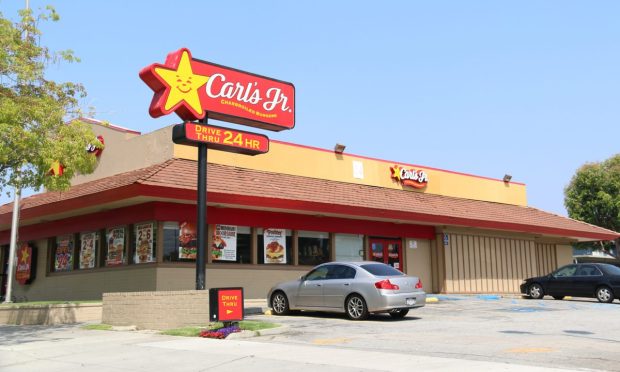QSR Chains Combine Predictable Loyalty Rewards With Intermittent Surprises to Drive Engagement

For today’s major restaurant brands, loyalty programs are no longer a differentiator in and of themselves. With consumers having so many options of restaurants that will reward them for their purchases, brands have to work harder to become consumers’ go-to choice.
CKE Restaurants, parent company of quick-service chains Hardee’s and Carl’s Jr., announced Wednesday (March 23) the launch of its brands’ loyalty programs, which use a tiered points-per-dollar rewards structure with periodic moments of surprise and delight.
Read more: Restaurant Loyalty Holdouts Get on Board as Consumers Expect to Be Rewarded
“Part of … the differentiation is … as we went in, really delivering high value to our consumers was a top priority,” CKE Restaurants Chief Brand Officer Chad Crawford told PYMNTS in an interview. “It was really important that we included key menu items, but also a lot of interest, so that they could achieve rewards near term with lower spend, but then have great aspirational opportunities to continue to engage.”
Findings from PYMNTS and Paytronix’s January study, “The Digital Divide Report: Minding the Loyalty Gap,” which drew from a survey of more than 2,400 U.S. adults, found that 61% had earned loyalty rewards for their spending in the previous 30 days. Additionally, the study found that quick-service restaurant (QSR) customers typically interact with these programs via mobile app.
See more: Restaurants Compete to Make Loyalty Programs Stand out as Consumers Join Multiple Programs
The New and the Familiar
Crawford argued that, today, the key to a strong loyalty program is balancing giving consumers control with reliable, predictable offerings and incorporating surprise and delight.
“I think in loyalty overall, part of what is exciting about it is you can have the predictability but also take the opportunity for some surprise fun along the way,” he said.
Most restaurants offer the ability to earn loyalty rewards, according to data from PYMNTS’ 2022 Restaurant Friction Index, created in collaboration with Paytronix, which drew from a survey of more than 500 managers of QSRs and full-service restaurants (FSRs) across the United States. Specifically, the study found that two-thirds of QSRs and one-third of FSRs offer loyalty programs.
Read more: Loyalty Programs Best Way to Get Diners to Spend More
Additionally, the study also drew from a survey of a census-balanced panel of more than 2,100 U.S. consumers. It revealed that, of features that could potentially drive spending, consumers rank loyalty programs as the most likely to make them more inclined to purchase from a given restaurant.
He noted that the tiered structure, whereby consumers can receive more rewards once they reach certain points (“Stars”) thresholds, “almost gamifies it,” driving engagement.
The Omnichannel Approach
Crawford noted that the program is part of the company’s overall push to grow the omnichannel access consumers have to its brands.
“What we’ve seen is that consumers want that ease of use, ease of access to the brands and more ways to engage,” he said.
Findings from PYMNTS’ December study, “The Digital Divide: Delivery Service Aggregators and the Digital Shift,” created in collaboration with Paytronix, revealed that one in four consumers said that order-related abilities would be the features most impactful for encouraging purchases at restaurants.
See more: Restaurants Must Sharpen Digital Tools to Match Convenience of Delivery Aggregators
Crawford added that “whether they’re coming into the restaurant, coming through the dining room, ordering ahead to pick up through the drive thru or ultimately having product delivered,” consumers want to have a unified experience with digital convenience.
Sure enough, the December study, which drew from a survey of a census-balanced panel of more than 2,500 U.S. consumers, found that 17% rank pickup-related abilities as the features that would go the furthest, and a similar share said the same of payment-related abilities.
Talk to Me
The loyalty launch is part of CKE Restaurants’ broader push to integrate digital technologies into more parts of restaurant operations. Crawford noted that doing so can improve the internal and consumer-facing experiences, with the company focusing on “simple ease of use, the ability to adapt, change and learn, and obviously platforms that are built for expansion and opportunity.”
He added that, by using systems that can “talk to each other,” the brand is better able to maintain a consistent customer experience across channels, and the corporate office is better able to communicate with all restaurants.
He said he not only expects digital systems to increasingly be able to talk to each other, but he also believes consumers will soon become more able to talk to their devices, removing friction from the purchasing process.
“As we look down the road, I think there are a lot of technologies that are coming along that are going to continue to make that ease of access for guests even that much higher,” he said. “There are some integrations and learnings, whether it be voice order to restaurants or voice order to brands or some of those other capabilities, that I think will continue to accelerate.”
